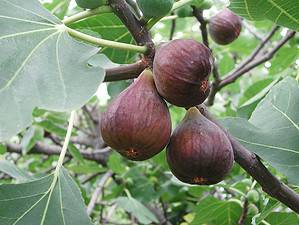Spider plants are some of the easiest and most forgiving houseplants for beginners. They will tolerate an insane level of neglect and bounce back quickly when you finally remember to water them or open the curtains and give them some light. This is why you’ll so frequently find them in offices and stores, looking good effortlessly. But spider plants do have their problems, and we’ll highlight a few of these in this article.
Key Points
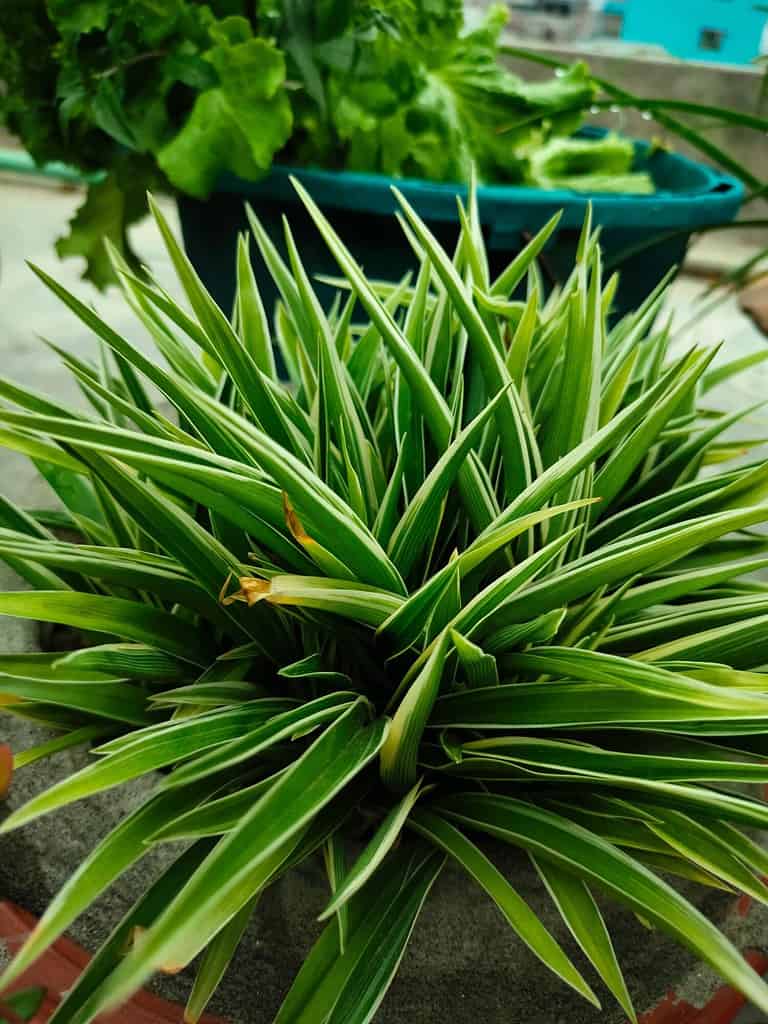
In warm weather, spider plants can stay outdoors but will not survive temperatures below 50 °F.
©Samia jannat Keya/Shutterstock.com
- Spider plants are native to South Africa and come in over 200 species.
- They are immensely popular house plants because they are beautiful, low-maintenance, and propagate in an interesting way.
- Their leaves are shaped like wide blades of grass and can be solid green or striped with a lighter cream color.
- They reproduce by sending out long runners with white blooms that produce spider-like baby plants.
- Spider plants do have limits to the abuse they will take in water, temperature, humidity, and light. They are not completely indestructible!
- Pet owners should also know that spider plants are mildly hallucinogenic for cats and can upset pets’ stomachs if they eat a large quantity.
Description of Spider Plants
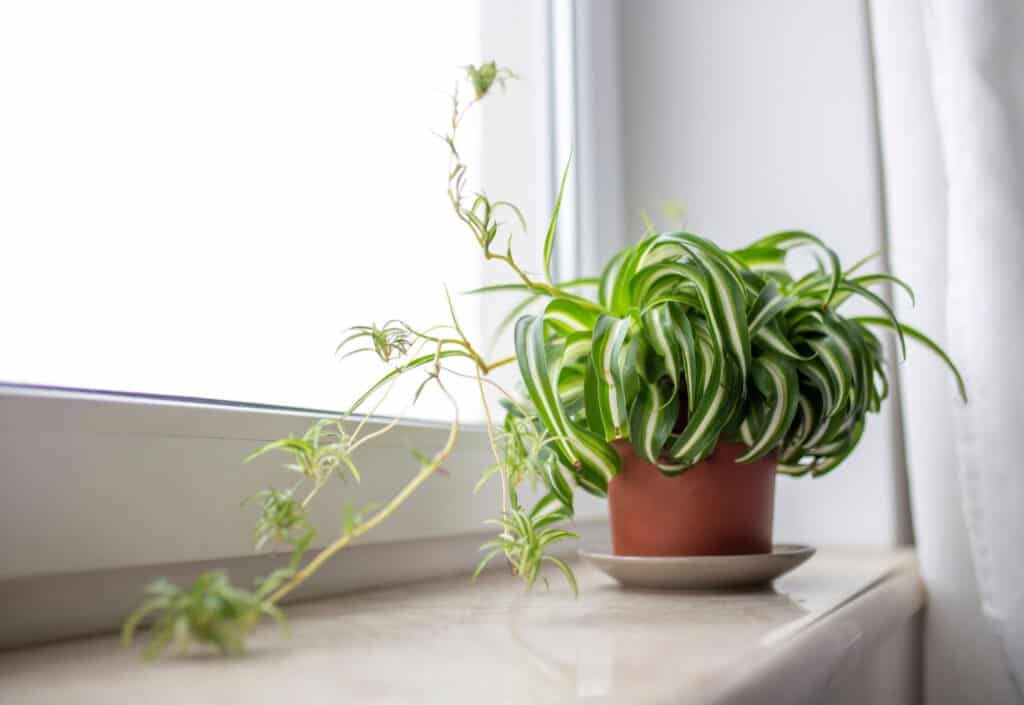
Spider plants are easy to propagate from the babies they produce on vines.
©ArtCreationsDesignPhoto/Shutterstock.com
The spider plant is known by botanists as Chlorophytum comosum. It is native to South Africa and comes in more than 200 different varieties with different leaf and coloration patterns. Two of the most common sorts seen in houseplants are solid green or green with one or more cream-colored stripes running lengthwise on each leaf. It has the appearance of a wide-bladed grass with gracefully arcing leaves of up to 18 inches long.
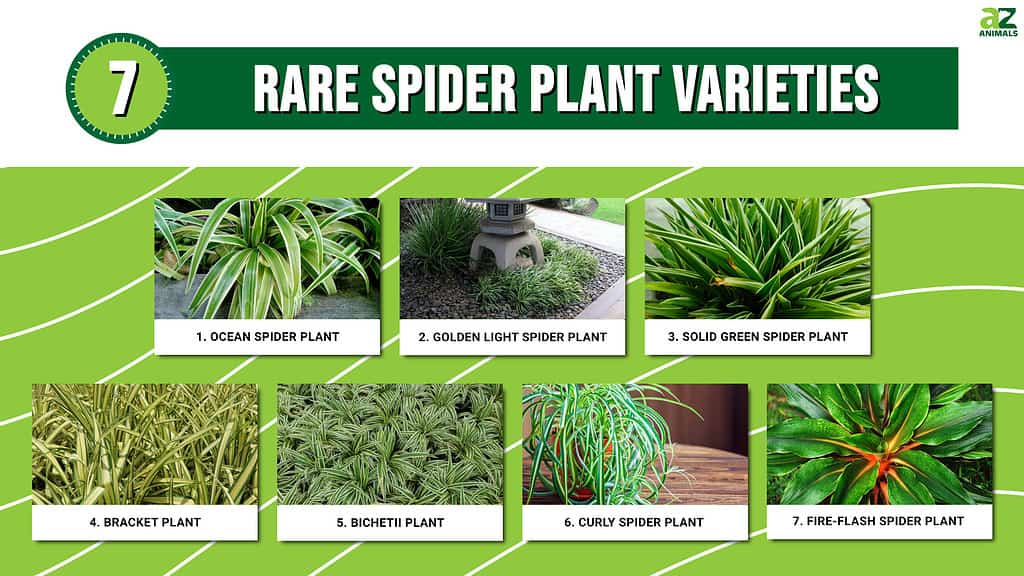
Propagating Spider Plants
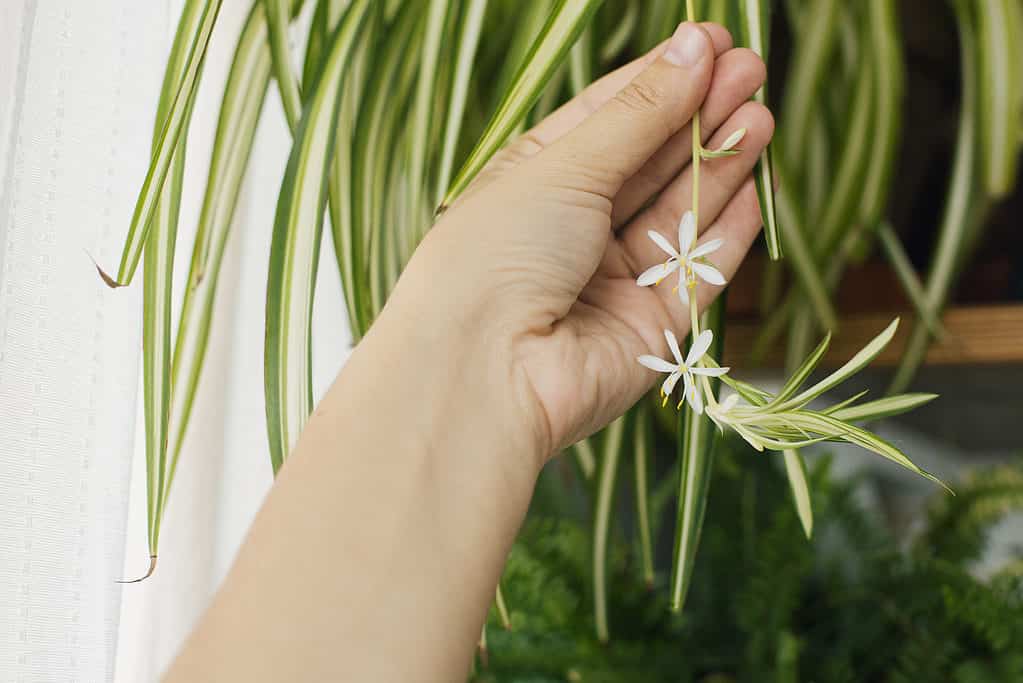
Spider plants have runners with short-lived six-petalled blooms that soon give way to new baby plants.
©iStock.com/Bogdan Kurylo
A happy spider plant will send out runners with small delicate star-like white blooms. The runners quickly become weighed down with growing baby plants. They actually look a bit like little spiders, hence the common name of the plant. The babies are quite easy to root in water or soil, still connected to the runner until they’ve become established. If you choose not to root the new plants, they’ll make an impressive display hanging on their stems from the mother plant in a hanging basket. Spider plants can also do well in a terrarium, in a pot of mixed plantings, or as an annual in an outdoor flower garden. In tropical growing zones they will be perennials and potentially cover a large area as they send out networks of runners with babies.
Problems of Spider Plants
Spider plants are extremely tolerant of neglect, to the point you might start to wonder if they are actually weeds! Many of their problems are extremes of neglect, though. Here are some examples:
1. Light
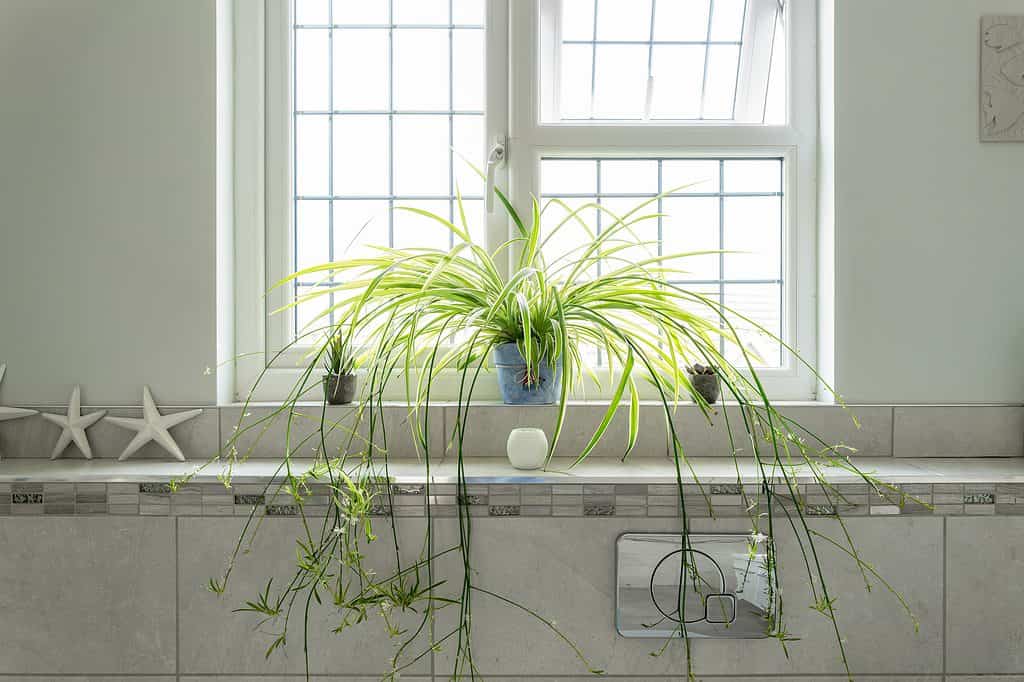
This spider plant enjoys optimal conditions in a bright window of a humid bathroom.
©Nick Beer/Shutterstock.com
Spider plants will tolerate low, moderate, or bright light conditions. If the light is too low, their growth will slow or stop. If it’s too bright, they can look bleached and have brown, burned spots. This kind of leaf damage can’t really be reversed but when you get the plant into better conditions, new healthy leaves will begin to replace the damaged ones.
2. Temperature
The best temperature for a spider plant is between 65-75°F. They can go 10 degrees above or below this range but can’t thrive long-term at temperature extremes. In fact, one of the fastest ways you can kill this plant is to forget to bring it in from one night of freezing temperatures.
3. Humidity
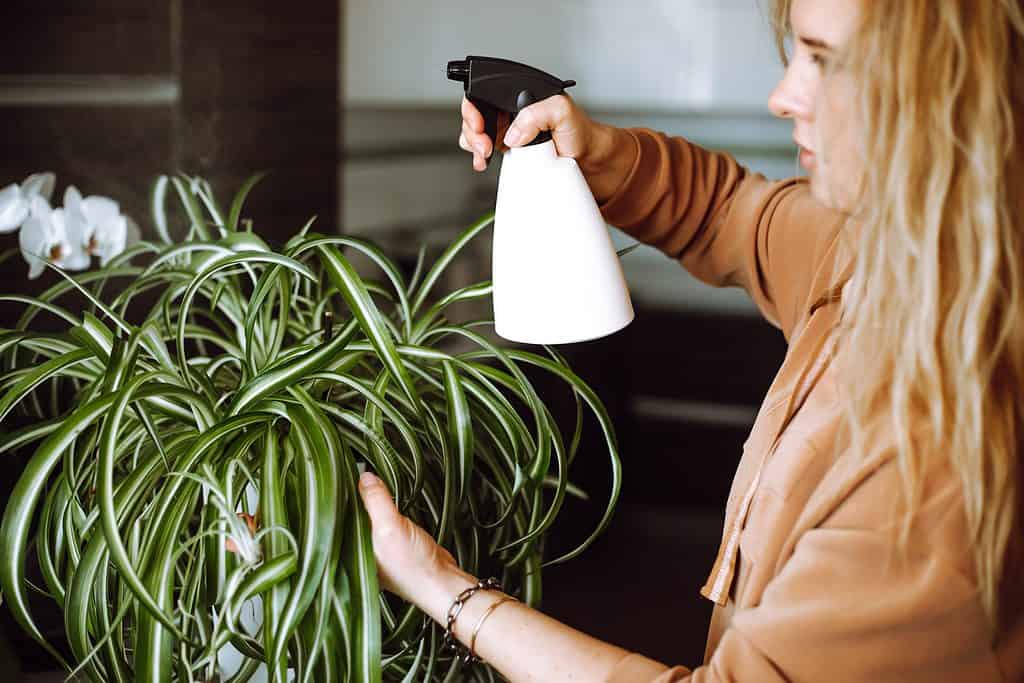
Misting with water is one of the best ways to maintain proper humidity for your spider plant.
©tativophotos/Shutterstock.com
Ideally, spider plants prefer humidity levels of 50-60%. A typical home’s humidity might go down to 30%, and in that case, the plant will likely start to get brown, shriveled-up leaf tips. This is less likely to happen if you regularly mist the plant. Alternatively, you could place the pot on a tray of water, elevated on stones to prevent the water from reaching the soil to create constant humidity from evaporation. Or of course, you could keep it in a terrarium.
4. Water
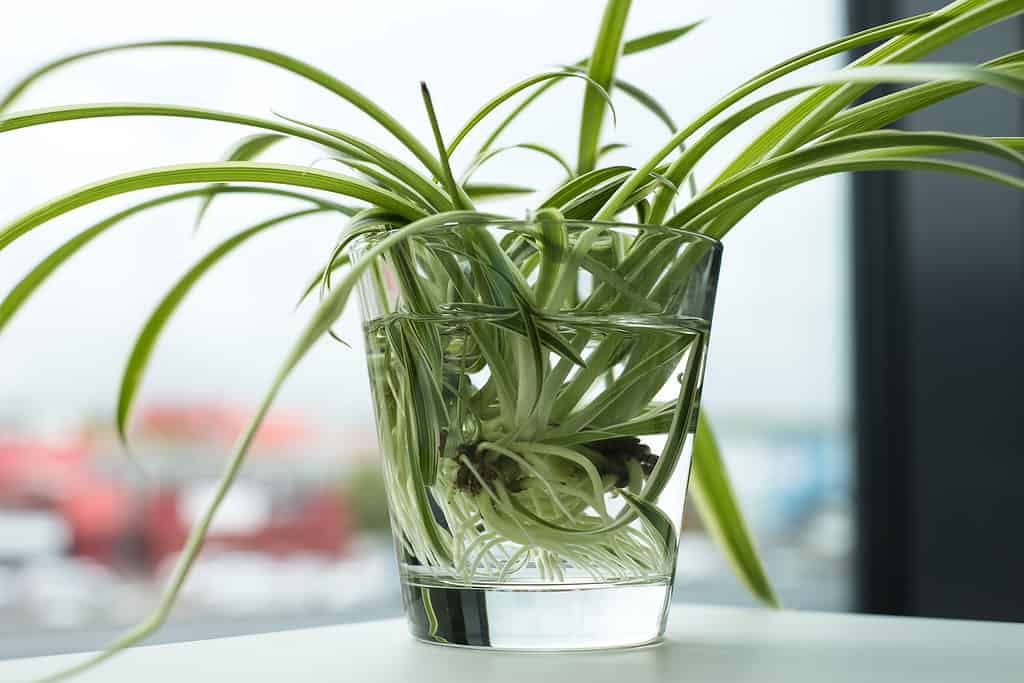
Spider plants can die from overwatering, yet they can live in a glass of water for quite a long time.
©iStock.com/jaanalisette
The best practice is to water your plants once a week in the growing season but maybe every two weeks in the winter when their growth slows down. But let’s be perfectly honest here. If you’re really, really bad with plants, you can ignore a spider plant until the leaves start to look pale, curled from the sides, and limper than usual. Then drench the plant thoroughly and you’ll find it has bounced back within a few hours. Yes, this is major plant abuse. But it means that practically speaking you can let weeks pass between waterings.
That approach to watering is not just laziness. It is a practical way to make sure you don’t overwater. Instead of guessing at it, you’re waiting to water again when the plant actually shows you it is thirsty. And overwatering is a far worse problem than underwatering, at least for this species. You may notice that leaves lose their color and turn brown just as if they had too much light. The difference is that the leaves will feel moist (because they’re full of water) rather than dry and crispy. They may also turn black at the base and start to fall off even though much of the leaf still looks green. If root rot sets in, the plant may not be salvageable.
5. Pests
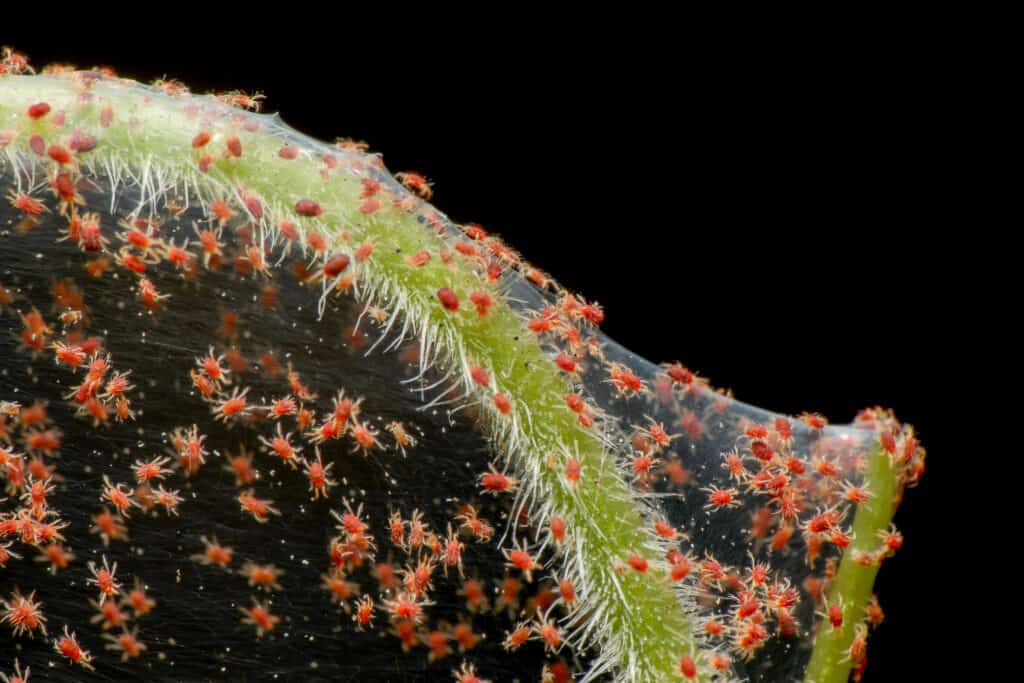
A full infestation of spider mites can cover the leaves of a plant with fine webs covered in tiny insects.
©BirdShutterB/Shutterstock.com
Spider plants don’t have too many issues with pests, but they can get infested with mealybugs, aphids, whitefield and spider mites. Keeping the humidity high can help. You can also use neem oil and natural insecticides made with vinegar if you prefer not to use chemical insecticides.
6. Pets
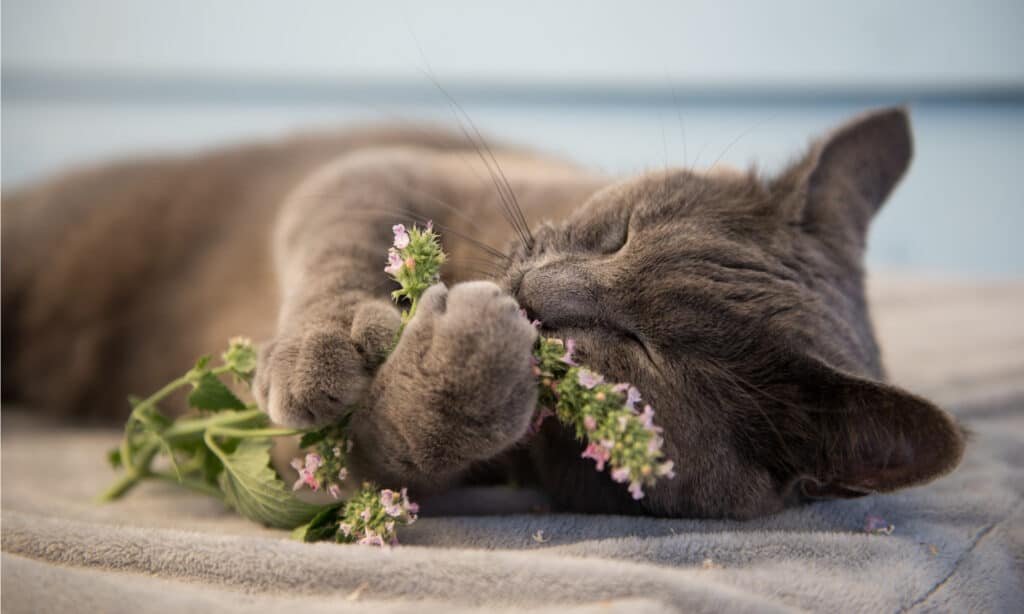
Spider plants can be mildly hallucinogenic for cats, though maybe not as insanely pleasurable as catnip.
©Anna Hoychuk/Shutterstock.com
Spider plants are non-toxic to children and pets. However, when eaten in larger quantities they can cause an upset stomach, vomiting, diarrhea, and skin irritation. This can especially be a problem with cats, as they enjoy batting at the leaves and runners and chewing on the leaves like grass. Moreover, they can have a mildly hallucinogenic effect on cats. Nothing like the hard stuff – catnip – but enough to tempt your cat to come back for more. And more.
7. Overpopulation
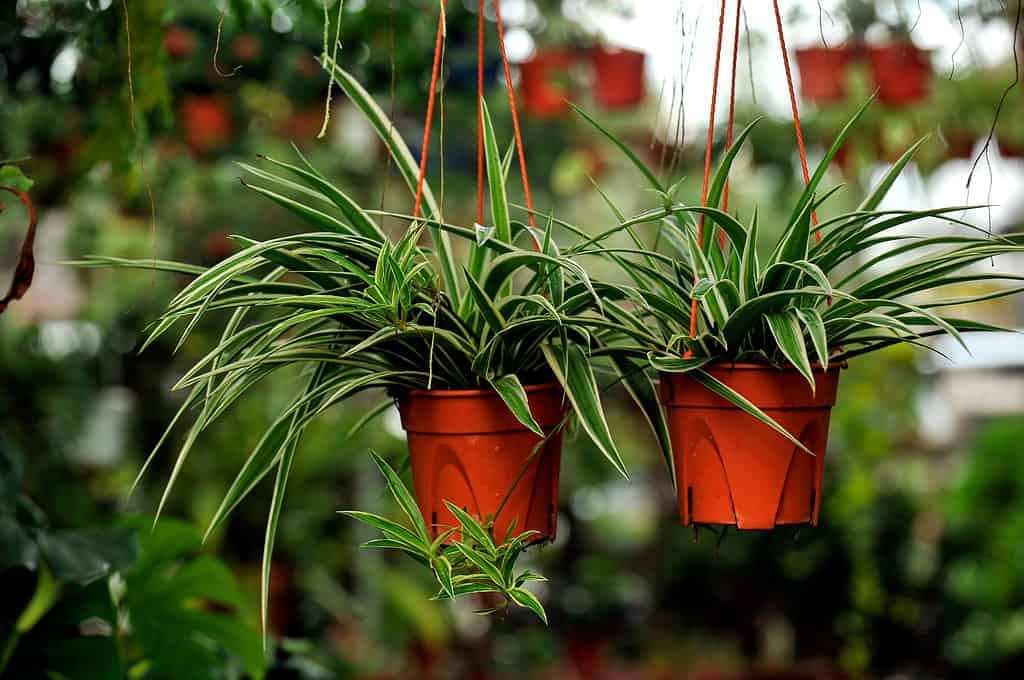
You might think you only want one spider plant, but your spider plant has other ideas.
©IZZ HAZEL/Shutterstock.com
Well, this last one is . . . too much of a good thing. We love our spider plants and their spidery little babies. But after you’ve rooted about 16 of them in their own pots and they’ve started having babies, and after you’ve given every friend and family member two or three of them, and after you’ve taken several to work in Ziplock bags and left them in the break room for people to take . . . the babies keep coming. And you can’t always just leave them on their runners as at a certain point they naturally fall off or the runner itself begins to die. So, you’re going to have to get comfortable throwing some of them away, turning a blind eye to your cat’s nocturnal salad-eating parties, or better yet, planting them outdoors along with your spring annuals and saying goodbye to them with the first frost of the fall. It’s all part of the circle of life.
The photo featured at the top of this post is © Coplay/Shutterstock.com
Thank you for reading! Have some feedback for us? Contact the AZ Animals editorial team.





